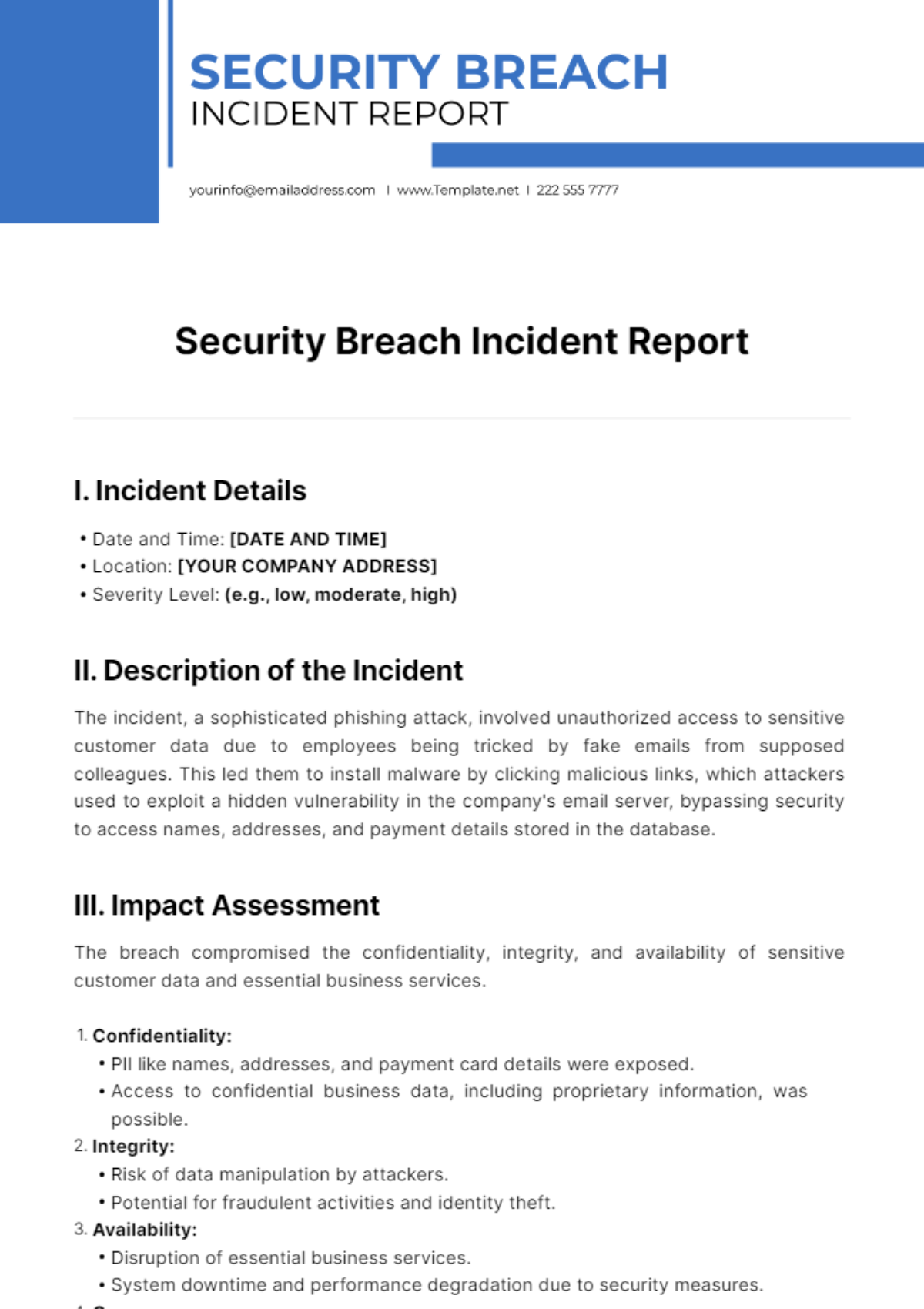Millions Made From Office365 Hacks: Inside The Executive Email Breach

Table of Contents
The Anatomy of an Office365 Executive Email Breach
Executive email accounts are prime targets for cybercriminals because they often hold the keys to company finances and sensitive information. Breaching these accounts can lead to significant financial losses and reputational damage. Several methods are employed to gain unauthorized access:
- Phishing Attacks (Sophisticated Spear Phishing): These attacks use highly personalized emails designed to trick executives into revealing their login credentials or clicking on malicious links. Spear phishing campaigns meticulously research their target, adding a layer of authenticity that makes them particularly effective.
- Credential Stuffing and Brute-Force Attacks: Hackers use stolen credentials from other data breaches to attempt logins to Office365 accounts. Brute-force attacks involve systematically trying various password combinations until they find the correct one. Weak passwords significantly increase the success rate of these attacks.
- Exploiting Vulnerabilities in Third-Party Apps Integrated with Office365: Many organizations utilize third-party apps connected to their Office365 accounts. Vulnerabilities in these apps can provide an entry point for hackers to gain access to the entire system.
- Malware and Ransomware Infections: Malicious software can be introduced through phishing emails or compromised websites, granting hackers remote access to infected computers and potentially the Office365 accounts associated with them. Ransomware attacks encrypt critical data and demand payment for its release.
- Social Engineering Tactics: Hackers employ manipulative techniques to trick employees into divulging sensitive information or granting unauthorized access. This can involve impersonating trusted individuals or leveraging psychological vulnerabilities.
Weak passwords and a general lack of security awareness among employees significantly increase the vulnerability to these attacks. Robust security practices, including strong password policies and regular security training, are crucial to mitigating this risk.
Financial Ramifications of Compromised Executive Accounts
The financial consequences of a successful Office365 hack targeting executive accounts can be catastrophic. Losses can stem from several avenues:
- Wire Transfer Fraud: Hackers can intercept or redirect wire transfer instructions, diverting funds to their own accounts.
- Invoice Redirection Scams: Compromised accounts can be used to alter invoice details, directing payments to fraudulent accounts.
- Data Extortion and Ransomware Demands: Hackers might steal sensitive data and demand a ransom for its return or threaten to publicly release it.
- Loss of Intellectual Property: Confidential company information, trade secrets, and other intellectual property can be stolen and used by competitors or sold on the black market.
- Reputational Damage and Legal Costs: Data breaches can severely damage an organization's reputation, leading to lost business and significant legal fees.
According to a recent study by [Insert reputable source here], the average cost of a data breach involving executive email compromise is [Insert statistic here], with some cases resulting in losses exceeding [Insert statistic here].
Identifying and Preventing Office365 Executive Email Breaches
Proactive security measures are far more effective and cost-efficient than reactive responses. Organizations must implement robust security protocols to protect executive accounts:
- Multi-Factor Authentication (MFA): MFA adds an extra layer of security, requiring multiple forms of authentication (e.g., password and a code from a mobile app) before granting access.
- Strong Password Policies and Password Management Tools: Enforce strong password requirements and encourage the use of password management tools to generate and securely store complex passwords.
- Regular Security Awareness Training for Employees: Educate employees about phishing scams, malware threats, and other social engineering techniques. Regular training keeps everyone updated on the latest threats.
- Advanced Threat Protection (ATP) and Email Security Solutions: Implement robust email security solutions that can detect and block malicious emails and attachments before they reach the inbox.
- Regular Security Audits and Penetration Testing: Regularly assess the security posture of your Office365 environment and conduct penetration testing to identify vulnerabilities.
- Incident Response Planning: Develop a comprehensive incident response plan to effectively manage and mitigate the impact of a security breach.
The Role of Third-Party Applications and Integrations
Third-party applications integrated with Office365 can introduce significant security risks if not properly managed:
- Vetting Third-Party Applications Thoroughly Before Integration: Carefully review the security practices and reputation of any third-party application before granting access to your Office365 data.
- Monitoring Access Permissions Granted to These Apps: Regularly review and restrict the access permissions granted to connected applications, limiting them to only the necessary functionalities.
- Regularly Reviewing and Updating Connected Apps: Keep third-party apps updated with the latest security patches to address any known vulnerabilities.
- Choosing Reputable and Secure Third-Party Vendors: Prefer vendors with strong security track records and robust security certifications.
Compromised third-party applications can provide a backdoor for hackers to gain access to your Office365 environment, making careful selection and ongoing monitoring critical.
The Future of Office365 Security and Executive Protection
The cybersecurity landscape is constantly evolving, with cybercriminals constantly developing new attack vectors. The future of Office365 security will rely on:
- AI-Powered Threat Detection: AI and machine learning can analyze vast amounts of data to identify suspicious activities and potential threats in real time.
- Behavioral Analytics: Monitoring user behavior to detect anomalies that might indicate a compromise.
- Improved Authentication Methods (e.g., Biometrics): Implementing more secure authentication methods, such as biometric authentication, can significantly enhance security.
- Zero Trust Security Models: Adopting a Zero Trust security model, which assumes no implicit trust and verifies every user and device before granting access.
The ongoing arms race between cybercriminals and security professionals necessitates a proactive and adaptable approach to security.
Conclusion: Safeguarding Your Business From Office365 Hacks
Office365 executive email breaches represent a significant threat to organizations, potentially leading to substantial financial losses and reputational damage. The methods used are sophisticated and constantly evolving, emphasizing the need for robust and proactive security measures. Implementing multi-factor authentication, strong password policies, regular security awareness training, and advanced threat protection are crucial steps in mitigating this risk. Regularly reviewing and updating third-party applications and investing in advanced security solutions, such as AI-powered threat detection and behavioral analytics, are essential for protecting your executive accounts and preventing costly Office365 executive email breaches. Proactively assess your current Office365 security posture and take the necessary steps to safeguard your business today. For additional resources on enhancing your Office365 security, visit [Link to relevant resources].

Featured Posts
-
 Brewers Early Season Struggles How To Fix Them For A Playoff Run
Apr 23, 2025
Brewers Early Season Struggles How To Fix Them For A Playoff Run
Apr 23, 2025 -
 Upl Dinamo Obolon Khto Peremig 18 Kvitnya
Apr 23, 2025
Upl Dinamo Obolon Khto Peremig 18 Kvitnya
Apr 23, 2025 -
 Pei Easter Sunday And Monday Whats Open And Closed
Apr 23, 2025
Pei Easter Sunday And Monday Whats Open And Closed
Apr 23, 2025 -
 Valeur Ajoutee Infotel Pourquoi Les Clients L Apprecient
Apr 23, 2025
Valeur Ajoutee Infotel Pourquoi Les Clients L Apprecient
Apr 23, 2025 -
 Did Warren Buffett Time His Apple Stock Sale Perfectly
Apr 23, 2025
Did Warren Buffett Time His Apple Stock Sale Perfectly
Apr 23, 2025
